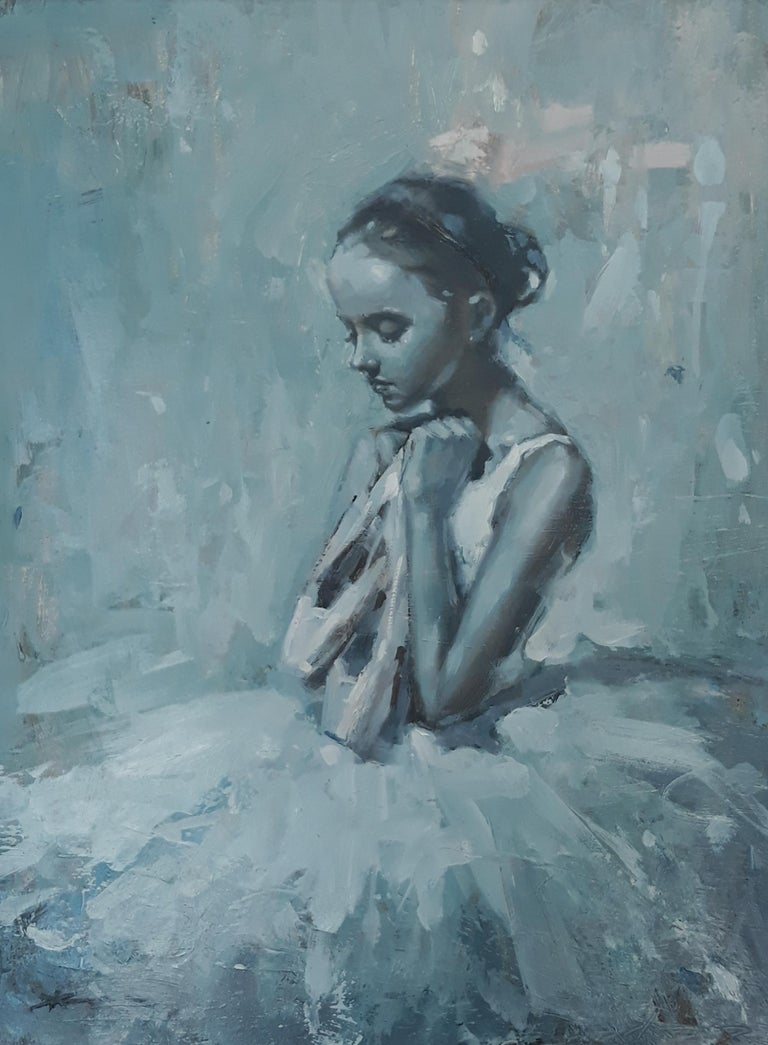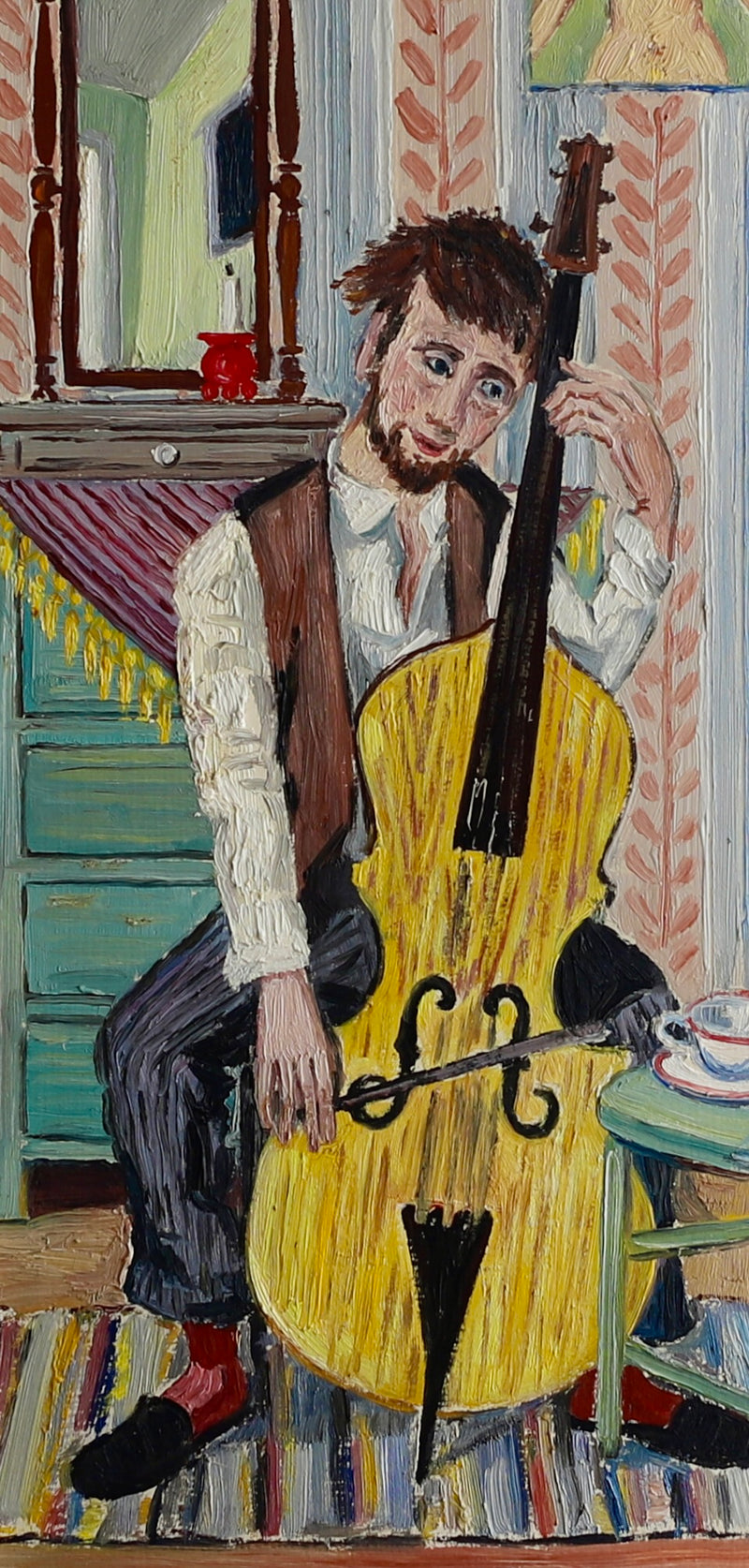Discovering the Depths of Feeling with Figurative Oil Painting Strategies
Discovering the Depths of Feeling with Figurative Oil Painting Strategies
Blog Article
The Function of Feeling and Expression in Figurative Oil Painting: An In-Depth Evaluation of Subject and Composition
The interplay of feeling and expression in figurative oil paint offers as an essential lens through which one can take a look at the detailed connection between subject issue and structure. Artists harness various techniques, from shade option to brushstroke characteristics, to grow emotional resonance within their works.
Recognizing Feeling in Art
Emotion in art acts as a powerful avenue for expression, allowing artists to share complex feelings with their work. In metaphorical oil paint, this psychological deepness is typically depicted with the representation of the human number, capturing the subtleties of human experience. The option of subject matter, color combination, and brushwork all add to the emotional vibration of a piece.
Artists often bring into play personal experiences, social concerns, or global styles to stimulate feelings in the viewer. For example, a picture may show susceptability, while a dynamic number in activity can symbolize freedom or turmoil. These psychological threads connect the audience to the artwork, cultivating a dialogue that goes beyond the aesthetic medium.
Furthermore, the interaction between light and shadow can enhance emotional intensity, directing the audience's gaze and accentuating specific components within the structure. The usage of texture in oil painting further includes layers of complexity, welcoming a responsive feedback that enhances the emotional experience. In general, recognizing feeling in art is crucial for appreciating the subtleties that characterize metaphorical oil paint, as it changes plain representation right into a profound exploration of the human condition.
Secret Components of Composition
In the realm of figurative oil paint, the composition works as the underlying structure that arranges visual components and improves the psychological narrative. Necessary elements of composition include equilibrium, contrast, focal point, and rhythm, each adding to the total influence of the art work.
Equilibrium refers to the circulation of aesthetic weight within the paint, which can be accomplished through in proportion or unbalanced arrangements. A well-balanced make-up gives stability, enabling the viewer to engage with the item sympathetically - figurative oil painting. Comparison, on the other hand, includes comparing various aspects, such as light and dark or warm and cool shades, to direct the visitor's eye and evoke emotional responses
The focal factor is essential, as it directs focus to the most significant part of the paint, often highlighting the emotional core of the narrative. By masterfully incorporating these vital aspects, artists can craft mentally resonant and engaging figurative oil paints that mesmerize and engage their target market.
Subject and Its Effect
Subject plays a pivotal duty in figurative oil painting, as it not only acts as the structure for the story yet additionally forms the visitor's interpretation and emotional involvement with the art work. The selection of subject-- be it a solitary number, a group dynamic, or a thematic depiction-- straight influences the emotional atmosphere communicated to the target market.

For instance, portraits often stimulate individual links, revealing the ins and outs of human expression and character, while scenes portraying public tasks can develop a sense of belonging or nostalgia. The social and historical context of the subject issue improves the visitor's understanding, prompting much deeper reflections on social standards, values, and the human condition.
Different topics additionally generate varying degrees of interaction; a significant problem depicted through figures in tension might evoke feelings of anxiety or empathy, while calm landscapes can conjure up harmony and consideration. Inevitably, the impact of subject in metaphorical oil paint is extensive, as it acts as a channel for emotional vibration, directing the viewer's action and analysis, and fostering a link between the onlooker and the artwork. This interplay is vital for the effective interaction of the artist's intent.
Strategies for Stimulating Feelings
The efficiency of figurative oil painting in sharing feelings is significantly affected by the strategies employed by the artist. One of one of the most important techniques is the usage of shade theory, where the tactical selection of tones can evoke certain emotional responses. Warm shades, such as oranges and reds, often generate sensations of enthusiasm or hostility, while cooler tones like blues and environment-friendlies tend to stimulate peace or unhappiness.
An additional vital method is the control of light and darkness, known as chiaroscuro. This technique enhances the three-dimensionality of figures, developing dramatic contrasts that can heighten psychological deepness. The positioning of light can lead audiences' emotions, highlighting certain components of the composition.
Brushwork also plays a vital role; loose, expressive strokes can convey power and spontaneity, whereas smoother strategies might suggest peace or accuracy. Moreover, the plan of subjects within the structure can affect psychological address impact. Close distance can recommend intimacy, while range may suggest seclusion.
Eventually, the mix of these techniques makes it possible for artists to craft stories that resonate with the audience, transforming a simple visual experience right into an expressive emotional journey. - figurative oil painting

Case Studies of Remarkable Works
Taking a look web at remarkable jobs of figurative oil paint discloses how numerous methods are used to stimulate effective feelings. One exemplary situation is Edvard Munch's "The Scream," where the altered figure and swirling history convey existential fear. Munch's use shade-- deep blues and vivid oranges-- heightens the psychological effect, showcasing just how scheme options can shape audience experience.
One more significant work is Pablo Picasso's "Les Demoiselles d'Avignon." Here, fragmented kinds and bold brushstrokes reflect a tumultuous emotional landscape, testing traditional depictions of the female number. Picasso's ingenious structure not just catches the visitor's focus but also welcomes contemplation on styles of identity and sexuality.
In Addition, Frida Kahlo's "Both Fridas" offers a poignant expedition of duality and self-identity. The contrasting numbers, linked by a shared heart, exhibit Kahlo's psychological depth and personal story. figurative oil painting. Her precise focus to detail and symbolic aspects offer to engage visitors on a natural degree
These case researches emphasize the profound link between feeling and structure in metaphorical oil painting, revealing how musicians harness strategy to interact intricate sensations and narratives that resonate throughout time and culture.

Verdict
Finally, the interaction of emotion and expression in figurative oil painting substantially enhances the customer's experience and analysis of the art work. Via a cautious option of subject and compositional techniques, artists convey profound stories that reverberate check out this site on both global and individual degrees. The application of shade theory, chiaroscuro, and brushwork additional enhances emotional depth, transforming each canvas right into an effective representation of the complexities of the human experience.
In figurative oil painting, this emotional deepness is often depicted through the representation of the human number, catching the nuances of human experience.Additionally, the interplay in between light and shadow can magnify emotional intensity, leading the audience's stare and drawing interest to certain elements within the structure. The usage of texture in oil paint further includes layers of intricacy, inviting a responsive response that improves the psychological experience.The focal point is critical, as it guides attention to the most considerable part of the painting, typically highlighting the psychological core of the narrative. Inevitably, the impact of subject matter in figurative oil painting is profound, as it offers as a channel for emotional resonance, directing the audience's response and analysis, and promoting a link between the observer and the art work.
Report this page